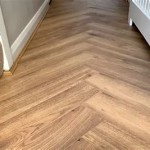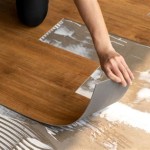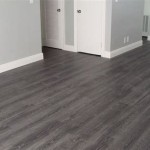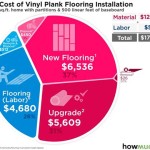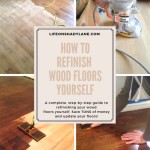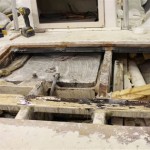Can You Install Vinyl Plank Flooring Over Subfloor?
Vinyl plank flooring offers a durable, water-resistant, and aesthetically pleasing option for homeowners. One common question regarding installation is whether vinyl plank flooring can be installed directly over the subfloor. The answer, while generally yes, requires a nuanced understanding of subfloor conditions and preparation.
Subflooring provides the structural base for the finished flooring. Common subfloor materials include plywood, oriented strand board (OSB), and concrete. Each material presents unique considerations when installing vinyl plank flooring.
Plywood and OSB subfloors must be clean, dry, level, and structurally sound. Any loose boards should be secured, and damaged areas repaired or replaced. Significant height variations, typically anything greater than 3/16" over a 10-foot span, necessitate leveling. This can be achieved through sanding high spots or using a self-leveling underlayment compound.
Concrete subfloors also require a clean, dry, and level surface. Cracks or imperfections should be filled with an appropriate concrete patching compound. Moisture is a critical concern with concrete. A moisture test is recommended to ensure the concrete slab has adequately cured and is dry enough for vinyl plank installation. Excessive moisture can lead to mold growth, adhesive failure, and flooring damage.
While direct installation over the subfloor is often possible, an underlayment is frequently recommended. Underlayments provide several benefits, including enhanced cushioning, sound insulation, and moisture protection. They also contribute to a smoother surface, minimizing the visibility of minor subfloor imperfections.
Various underlayment options are available, each designed for specific purposes. Foam underlayments offer comfort and sound dampening, while cork underlayments provide excellent insulation and moisture resistance. Some underlayments are specifically designed for use over concrete subfloors, providing a vapor barrier against moisture transmission.
Choosing the appropriate underlayment depends on the subfloor material, the specific vinyl plank flooring product, and the desired outcome. Manufacturers' recommendations should always be consulted to ensure compatibility and warranty compliance.
Installing vinyl plank flooring directly over existing flooring materials, such as hardwood, tile, or sheet vinyl, is generally not recommended. Existing flooring can harbor moisture, create uneven surfaces, and compromise the stability of the vinyl plank installation. Removal of the existing flooring is typically the preferred approach for optimal results.
However, some manufacturers allow installation over existing flooring under specific conditions. For instance, some vinyl plank flooring can be installed over well-bonded, level sheet vinyl. It is crucial to review manufacturer guidelines and assess the condition of the existing flooring before proceeding.
Proper surface preparation is paramount for a successful vinyl plank flooring installation. This includes cleaning the subfloor thoroughly to remove debris, dust, and any existing adhesive residue. A vacuum and a damp mop are typically sufficient for this purpose.
Acclimating the vinyl plank flooring to the room's temperature and humidity is essential before installation. This allows the material to adjust, preventing expansion or contraction issues after installation. Manufacturers' instructions typically specify the required acclimation period, which can range from 24 to 48 hours.
The installation method for vinyl plank flooring varies depending on the product. Click-lock systems are common, allowing planks to interlock without adhesive. Glue-down options require adhesive to bond the planks to the subfloor. Loose-lay planks rely on friction and weight to stay in place. Regardless of the method, following manufacturer instructions is crucial for a correct installation.
Expansion gaps are necessary around the perimeter of the room to accommodate the natural expansion and contraction of the flooring material. These gaps are typically concealed by baseboards or quarter-round molding.
Transition strips are used to create smooth transitions between different flooring materials or between rooms with varying floor heights. These strips provide a finished look and prevent tripping hazards.
Regular maintenance of vinyl plank flooring is relatively simple. Sweeping or vacuuming removes loose debris, while damp mopping with a manufacturer-approved cleaner keeps the flooring clean and maintains its shine.
Understanding the subfloor condition and preparing it correctly is crucial for the long-term success of a vinyl plank flooring installation. Consulting manufacturer guidelines and seeking professional advice when needed ensures a durable, beautiful, and trouble-free floor.

Lvp Flooring Installation Over Concrete Subfloor Full Instructional Builds By Maz Flooret

How To Install Glue Down Luxury Vinyl Plank Flooring On Osb Sub Floor

How To Install Vinyl Plank Flooring On Plywood Floor

20 Tips For A Great Vinyl Plank Flooring Installation

10 Beginner Mistakes Installing Vinyl Plank Flooring

Can You Install Vinyl Flooring Over Wooden Floorboards

Choosing Underlayment For Vinyl Plank Flooring Your Ultimate Guide Jona Panel S Inc

Installing Luxury Vinyl Floors Over Engineered Hardwood Honey Built Home

How To Install Waterproof Vinyl Plank Flooring Diy Installation

How To Prepare A Concrete Floor For Vinyl Flooring Parrys
Related Posts

